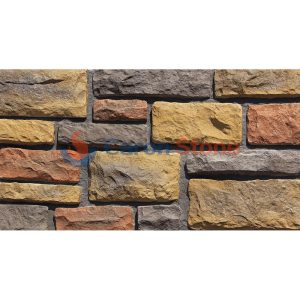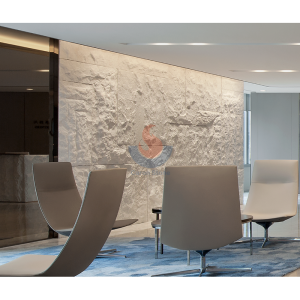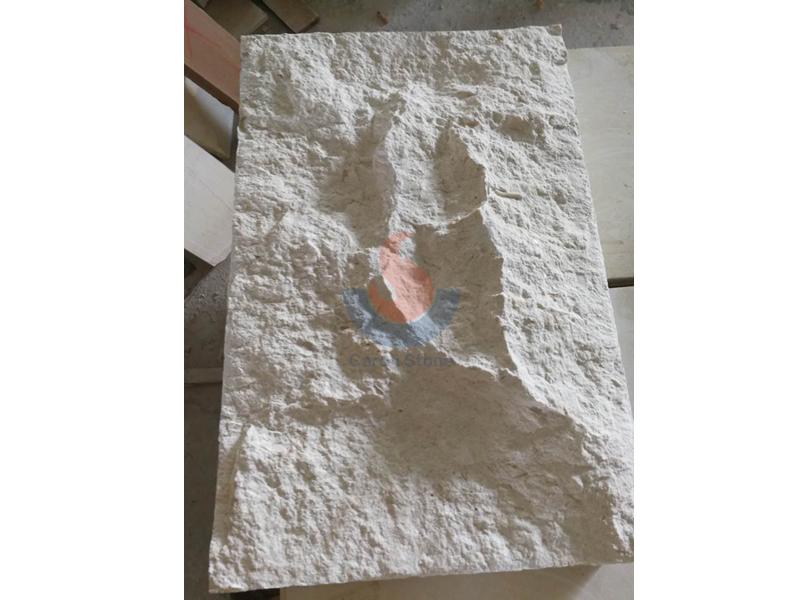In the construction industry, the pursuit of environmentally friendly materials and design solutions has become an irreversible trend. Traditional building materials are progressively being replaced by new and more sustainable choices as people’s knowledge of environmental preservation rises. Among these emerging materials, limestone has become a rising star in the construction field with its unique environmental protection characteristics and wide application potential. Today let’s investigate how limestone has evolved into the chosen material for ecologically friendly structures, its benefits in sustainable use, and how intelligent design may create the ideal mix of environmental preservation and beauty.

GB-M05 Artificial cultured limestone stacked ledger wall cladding stone tile
Natural properties and environmental value of limestone
Found in great abundance in nature, limestone is a sedimentary rock mostly composed of calcium carbonate. Since limestone is a natural resource, during mining and processing its effects on the environment is rather minimal. Compared with other building materials, the production process of limestone produces lower carbon dioxide emissions, which gives it a clear advantage in reducing carbon footprint. Furthermore, limestone is quite durable and can be utilized in long-standing constructions without regular replacement, therefore lowering resource use and trash creation.
High-efficiency thermal regulation properties
A significant advantage of limestone is its good thermal regulation properties. Because limestone can efficiently absorb and release heat, it helps buildings keep their temperature constant. Apart from enhancing the building’s comfort, this natural heat control capacity lessens reliance on air conditioning and heating equipment, therefore lowering energy usage. limestone’s great heat capacity helps to keep the room cool in the hot summer by efficiently resisting the outside high temperature; in the freezing winter, it can help to retain the warmth of the room.
Diverse application scenarios
limestone is used not only for the building’s front but also for internal design works. For flooring, wall decorations and countertops, limestone, for instance, offers a natural and sophisticated visual appeal. At the same time, the natural texture and color changes of limestone can be integrated with various interior styles, whether it is modern simplicity or classical style, it can show its unique charm. By means of sensible design and layout, limestone may naturally beautify the structure while satisfying aesthetic requirements and functional purposes.
Limestone’s circular economy and reuse
The environmental advantages of limestone are also reflected in its potential for reuse and circular economy. Limestone can be recycled and reworked into fresh building components during building destruction or refurbishment. This reuse not only reduces the generation of construction waste, but also reduces the demand for raw materials, further reducing the burden on the environment. For best use of resources, waste limestone can be used as a horticulture soil conditioner following crushing or as infill for road building.
Sustainable Concepts in Design
In contemporary architectural design, the sustainable use of limestone not only depends on the properties of the material itself, but also calls for creative ideas of designers. By combining limestone with other environmentally friendly materials, such as recycled wood, low-emission coatings, etc., the environmental performance of the building can be further improved. Furthermore, by utilizing limestone’s natural beauty, architects can produce distinctive creative effects in the construction so that the structure not only satisfies criteria of sustainable development in terms of purpose but also provides visual enjoyment.

Natural limestone splited finished wall tile wall cladding panel stacked stone
With its natural environmental characteristics, excellent thermal regulation performance and diverse application scenarios, limestone has become a new choice for environmentally friendly buildings. By lowering carbon emissions, lowering energy consumption and encouraging resource recycling, it may not only highlight the beauty of nature in buildings but also help the construction sector migrate towards sustainable development. In future architectural design, limestone will continue to play its unique role and contribute to the realization of green building goals. limestone is definitely a great option deserving of attention if you are seeking for a building material that is both gorgeous and ecologically benign. Limestone offers us a fresh route to ecologically friendly construction in these time of striving sustainable growth.





